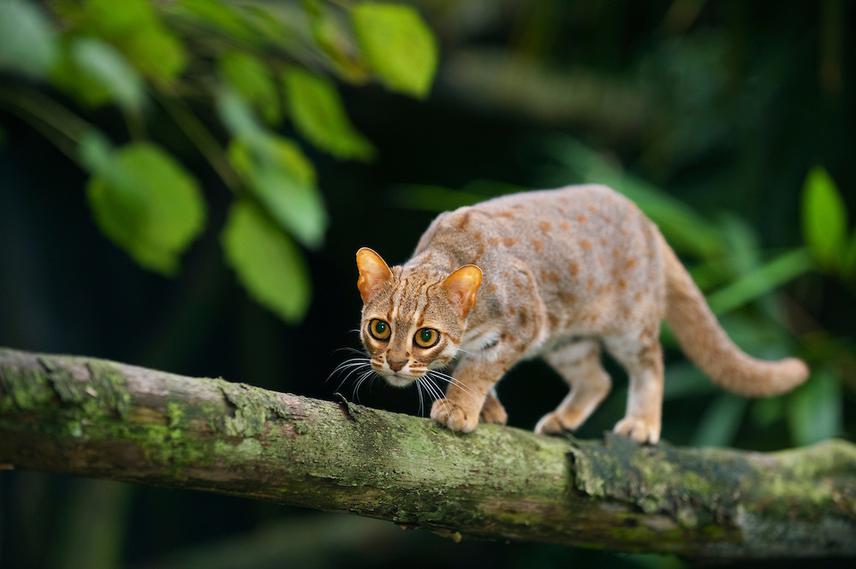Bhuwan Singh Bist
Other projects
30 Apr 2018
Call for the Wild Survey: Habitat Preference and Status Assessment of Fishing Cat (Prionailurus viverinnus) from Western Nepal
The project will generate the primary baseline information on Rusty Spotted cat. It will also access the conservation awareness of newly recorded cat member in Nepal.

Rusty spotted cat walking in the branches. ©Terry Whittaker.
Rusty spotted cat, Prionailurus rubiginosus (Hilaire, 1831) is one of the cat family's smallest member after black-footed cat. It is also called the humming bird of wildcat world. It is the endemic species of Indian sub-continent found only in India and Sri-lanka (Pocock, 1939). Photographic records show its presence in Bardia National Park, Nepal (Ramjan Choudhary and Rabin Kadariya in litt. 2014), and bordering India. It has been recorded in the Shuklaphanta Wildlife Reserve (SWR) during the camera trapping organized by National Trust for Nature conservation (NTNC) (The Kathmandu Post, 2016). Shuklaphanta Wildlife Reserve (SWR) covers an area of 305 sq. Km in Far-western region, Kanchanpur district. A small part of the reserve extends north of the East-West highway to create a corridor for seasonal migration of wildlife into Siwalik Hills.
This member of cat is listed as Near-threatened Ver3.1 by IUCN Red List category. Since, the species is very new in the scenario of Nepal, the research being carried out poses its own peculiarity. The research is the first scientific study on the species of cat of its own genera. In the scenario of Nepal, special focus has been paid to the research endeavour of flagship species especially on Bengal Tiger, Rhinocerous, and Elephant. Therefore, the small diverse varieties of mammals are getting ignored and still lack research fellowship. Hence, we pose anecdotal data in case of small sized mammals. The study primarily assesses:
1. Status, distribution of Rusty spotted cat in Shuklaphanta Wildlife Reserve (SWR).
2. Conservation awareness regarding Rusty spotted cat along with its sympatric species.
The research will use Camera trapping as the principal method to collect scientific data supported by Key Informant survey with the park officials followed with Group discussions. The research will generate the primary baseline information and will also become the species of focus after the completion of project. The outputs of the research will be disseminated through the publication of article. The output will also be presented in different seminars, workshops and also in national and international conferences if possible.